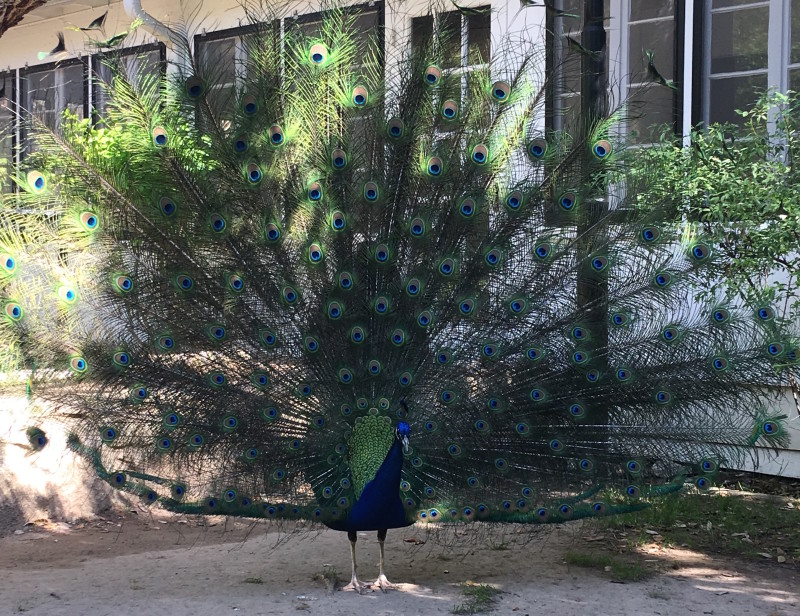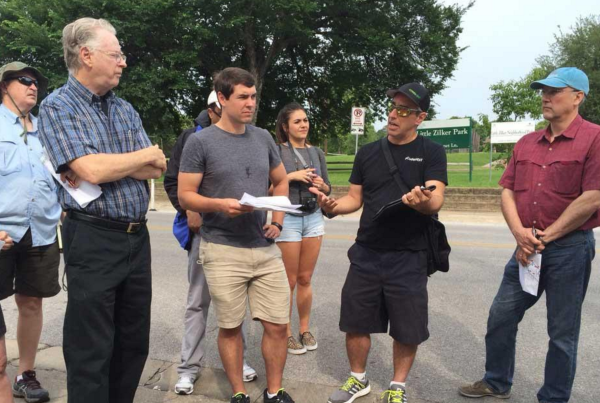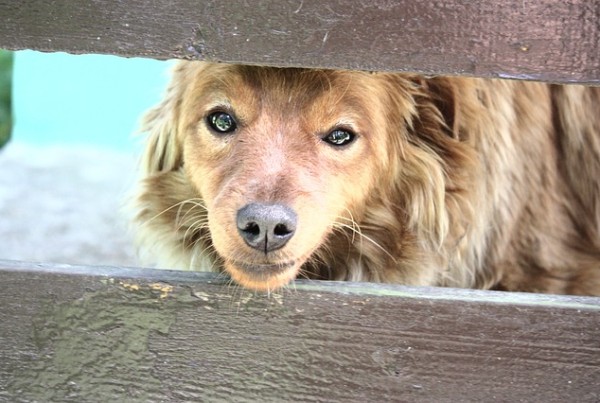Nestled in the posh neighborhood around 35th Street in Austin is Mayfield Park. Mayfield Park’s website warns drivers to be careful while driving in the area, because if you’re not, it’s likely that you’ll run over a peacock.
Right now, it’s mating season. The Mayfield Park peacocks are fanning their feathers and making loud noises to attract a mate. It is a show of colors – blue, green and purple.
Peacocks have been roaming the grounds of the park since before it was a park. More than 80 years ago some friends gave the owners of the property a pair of peafowl for Christmas. It was a private home before it was a park.
Volunteer Ann Eby has been feeding them for more than 20 years.
“It was in 1995,” Eby says. “I happened to stop at Mayfield park and learnt that the peacocks at that time were not getting fed regularly and so a group of volunteers and I started feeding them everyday.”
Blake Tollett is chair of another volunteer group formed in the 1980s to advocate for restoration of Mayfield Park. But peacocks often also require his attention. A few weeks ago Tollett and Eby doubled up as doctors to help an injured peacock.
“The bird looked like it had landed awkwardly or somehow bit its claw. We threw the blanket around the bird and we picked him up,” Tollett says.
For both Tollett and Eby, the peacocks are important residents of the park and an attraction for visitors. It looks like Peacocks are becoming popular in Texas.
But serious bird-watchers actually aren’t that interested in them. Dr. Byron Stone is a child psychiatrist by day and bird watcher, or birder, in his spare time. He’s also the president of the Texas Ornithological Society.
“A lot of birders tend to ignore peacocks because they are just domestic birds so they are kind of like chickens,” Stone says.
Peacocks are closely related to pheasants and they are native to Asia, Stone says. They did not occur in Texas naturally. But hunters brought pheasants to North America and now they breed in the wild. Peacocks are more domesticated.
This means they make pretty good pets. At least that’s what Geoffrey King, a student at Texas State University, thinks. He says his fascination for Peacocks started when he was four years old and he asked his parents to let him get one.
“As an elementary school kid I always brought mine inside and it watched TV with us when we were eating dinner,” King says.
Peacocks are bred not just for their beauty. Stone says they can also be used as watchdogs: “Peacocks can be very alert and they are also very loud.“
But it is this loud noise made by Peacocks that can bother neighbors. The Green Pastures restaurant in South Austin is home to many free roaming peacocks. But a resident complained to Austin Animal Control last year that the birds were coming onto his property. To save the peacocks from any sort of punishment, Jason Martin founded a Facebook group called the Peacock Liberation Front.
“It started off little bit as a joke – but also just wanting to call attention. But it turned into this neighborhood movement,” Martin says.
So love them or hate them, it looks like peacocks are here to stay. They’re just one colorful part of a changing and growing Texas.















